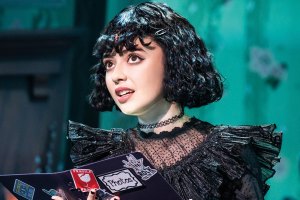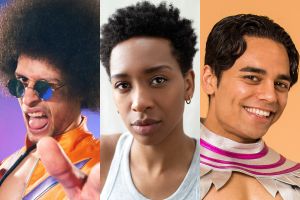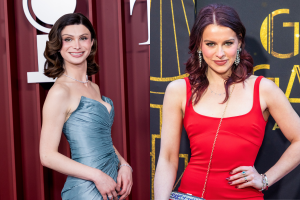Sibling Rivalry: Brothers & Sisters on Stage
Blood rivals or natural collaborators? Best friends or worst enemies? Michael Coveney explores the world of sibling actors, as identical twins Luke and Harry Treadaway play twin brothers at the Royal Court and Niamh Cusack stars in the Old Vic’s revival of Brian Friel’s play about five sisters, Dancing at Lughnasa.
Siblings have been populating the British stage for years, and not just when the Shakespearean twins peak in The Comedy of Errors. From Russell and Sybil Thorndike through to Judi and Jeffery Dench and Vanessa and Corin Redgrave, real-life brothers and sister have danced attendance on our drama while proving that talent is often genetic.
Thespian dynasties
Theatrical siblings have a unique feeling for each other even when not acting on the same stage. Niamh Cusack is now appearing in Brian Friel’s Dancing at Lughnasa at the Old Vic (alongside her husband Finbar Lynch and another lone sibling, Andrea Corr of the folk-singing family) but is in constant touch with older sisters Sinead, who is following her into the Old Vic in May in the Sam Mendes productions of The Cherry Orchard and The Winter’s Tale; and with Sorcha Cusack, who is appearing this month as a caring grandmother in Molly Davies’ A Miracle in the Royal Court’s Jerwood Theatre Upstairs.
Meanwhile, in the Court’s Jerwood Theatre Downstairs, there’s a brand new name on the box of dynasties, as 24-year-old identical twins Luke and Harry Treadaway play 22-year-old identical German twins Franz and Karl in Mark Ravenhill’s new play Over There. Separated at four years old, when their mother fled with one of them from East to West Berlin, the Ravenhill twins are reunited when one of them chases down the other in post-Communist Berlin.
Joined at the hip
Luke and Harry Treadaway are not exactly joined at the hip – though they did play conjoined punk rocker twins in Brothers of the Head, a filmed “mockumentary” based on a Brian Alldiss novel – but they are close. They made that film at the end of their first year at LAMDA and they both share an apartment in north London (where Harry’s girlfriend, That Face playwright Polly Stenham, also lives) and grew up together in a small town near Exeter in Devon, playing football and rugby as well as rock music.
They have already assembled several striking credits between them: Harry played Joy Division drummer Stephen Morris in Control, Anton Corbijn’s film profile of lead singer Ian Curtis, and has completed work on Andrea (Red Road) Arnold’s new film Fish Tank; while Luke played young Albert, an animal’s best friend, in the National Theatre’s ground-breaking War Horse and has since given two coruscating performances on the fringe in Simon Vinnicombe’s Cradle Me at the Finborough and Philip Ridley’s Piranha Heights at Soho Theatre.
Psychic moments
I catch up with these likeable likely lads as they munch their salads on a lunch break in the Royal Court rehearsal room strewn with an assortment of musical instruments – they are also writing the music for the production as they go along. Harry is darker and circumspect, Luke more impulsive and outward going. Ironically, as identical twins, you couldn’t easily mix them up. And they seem more like good friends than carbon copies of each other.
“We’re certainly not as close in that physical way as Karl and Franz are in Over There,” says Harry. “The characters have very specific memories of physical experience when apart which we don’t. And I don’t think we’ve shared any massively psychic moments in our lives.”
Luke agrees, saying that when you pick up a telephone you can always tell the “head space” the other person’s in. “It’s the same with us, and you can always tell us apart because of that. Although we are both actors, we have very much stayed away from trying to capitalise on being twins.” But do they ever get fed up with each other? “Of course. You can’t have a strong love for each other without moments of hate.”
As for so many people, the boys’ destinies were shaped by an influential drama teacher – at their mixed community college in Devon. Luke played Macheath in The Threepenny Opera, and the next year Harry played Macbeth (with Massive Attack blasting out behind his delivery of the dagger speech). Aged 16, they joined the National Youth Theatre and thought of applying to drama school when they met others who already were. Their father is an architect, their mother a teacher, and their elder brother is an artist.
Sisters doing it for themselves
Oddly enough, all the Cusack siblings were discouraged from going on the stage by their father Cyril, the great Irish actor who would have liked to have been a lawyer himself. Result? They all did: Sinead, Sorcha and Niamh, as well as their half-sister Catherine (Cyril re-married after his first wife, an actress, died). Brother Paul is now a television executive in Dublin and brother Padraig is an associate producer and planning boffin at the National Theatre.
Nearby, at the Old Vic, Niamh Cusack is rehearsing Dancing at Lughnasa, Brian Friel’s great play about five sisters – “those five brave Glenties women” – and pondering her sibling signals: “We are always concerned with each other, especially when one of us is going through a rough patch, because we all know what it’s like. And when it comes to being worried before we open in a show – well, we almost know what it’s like to be inside of each other.
“At the same time, I don’t really enjoy watching my sisters on the stage. Because I know what they’re feeling and I can’t so easily suspend disbelief. But I do get very proud watching them.”
Was she taken by surprise, ever? “When Sorcha was in Bag Lady, a one-woman piece by Frank McGuinness. I was blown away. I didn’t see her. I wasn’t watching my sister, I was watching somebody else. And I felt a similar thing when Sinead played Cleopatra for the RSC.”
Chekhovian casting
Like the Redgraves, the Cusacks have made a concerted family assault on Chekhov’s Three Sisters, but whereas Vanessa and Lynn had to find a niece (Jemma, Corin’s daughter) to play Irina, the Cusacks could play a straight flush as all three – Sinead as Masha, Sorcha as Olga, Niamh as Irina – with an extra double whammy of Niamh’s husband as Tusenbach and Cyril as an unforgettable doctor in Adrian Noble’s wonderful production for the Gate, Dublin, in 1990.
Shortly afterwards, Niamh played Pegeen Mike to Sorcha’s Widow Quinn in The Playboy of the Western World at the West Yorkshire Playhouse in Leeds, but she’s never experienced the real sibling sizzle on stage until rehearsing Dancing at Lughnasa.
“What Brian Friel has captured impeccably is that sense of how many subtextual vibrations are going on between different members of the family, all the time. You know from the twitch of an eyebrow the smell of somebody. It’s more intense in this play, but that is just what it’s like. On Three Sisters we shared a dressing room and we were very aware of what state each sister was in each day.”
The Treadaways may share a flat, but they hardly ever sit down at the meal table at the same time, so busy are their respective and separate schedules. It may well be that for theatrical brothers and sisters to get along in any meaningful manner at all, they have to shut out real life and head together for the same stage in post-Communist Berlin or pre-Revolutionary Russia.
Over There runs in the Royal Court Downstairs from 6 to 21 March 2009 (previews from 2 March) and A Miracle in the Royal Court Upstairs from 4 to 21 March (previews from 27 February). Dancing at Lughnasa opens on 5 March (previews from 26 February) at the Old Vic, where it continues until 9 May. A version of this article appears in the March issue of What’s On Stage magazine, which is out this week in participating theatres. To guarantee your copy of future print editions – and also get all the benefits of our Theatre Club – click here to subscribe now!!












